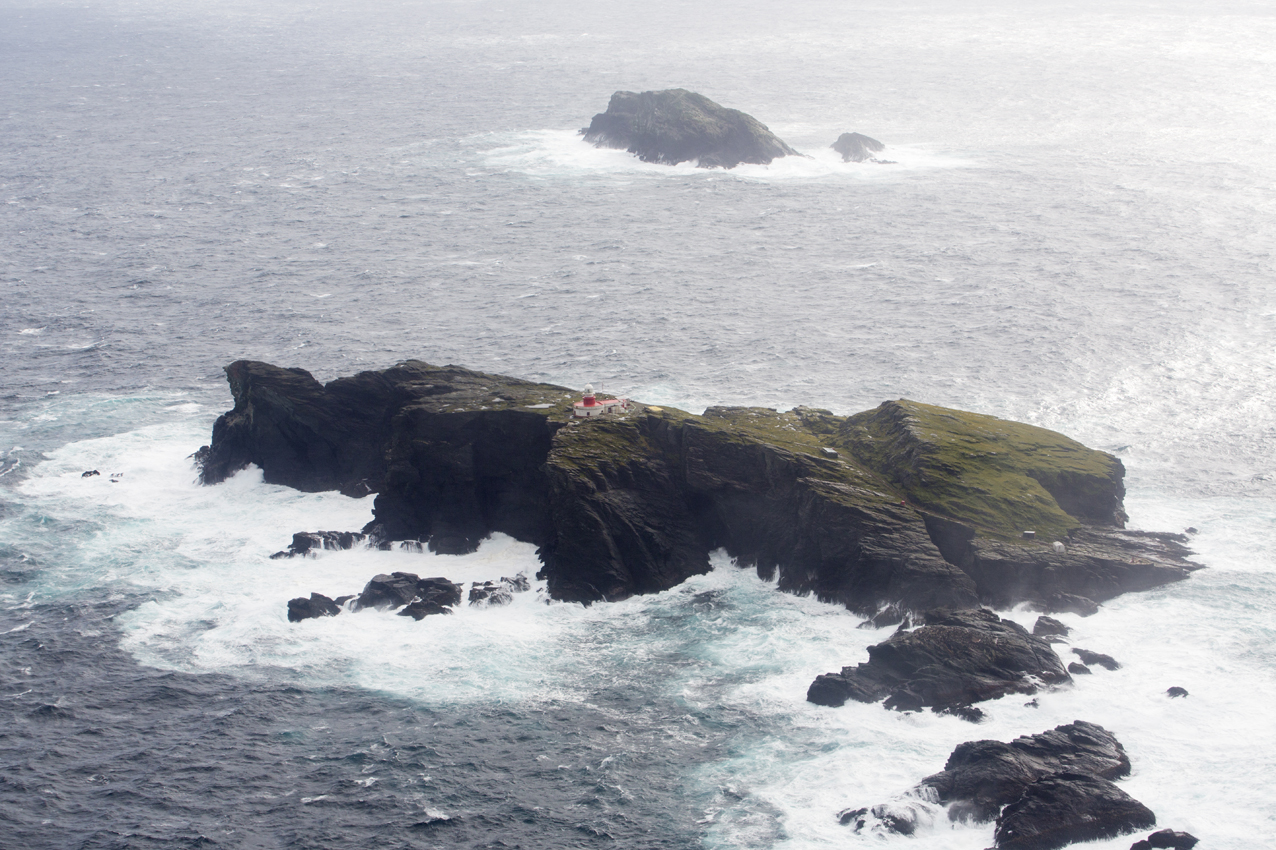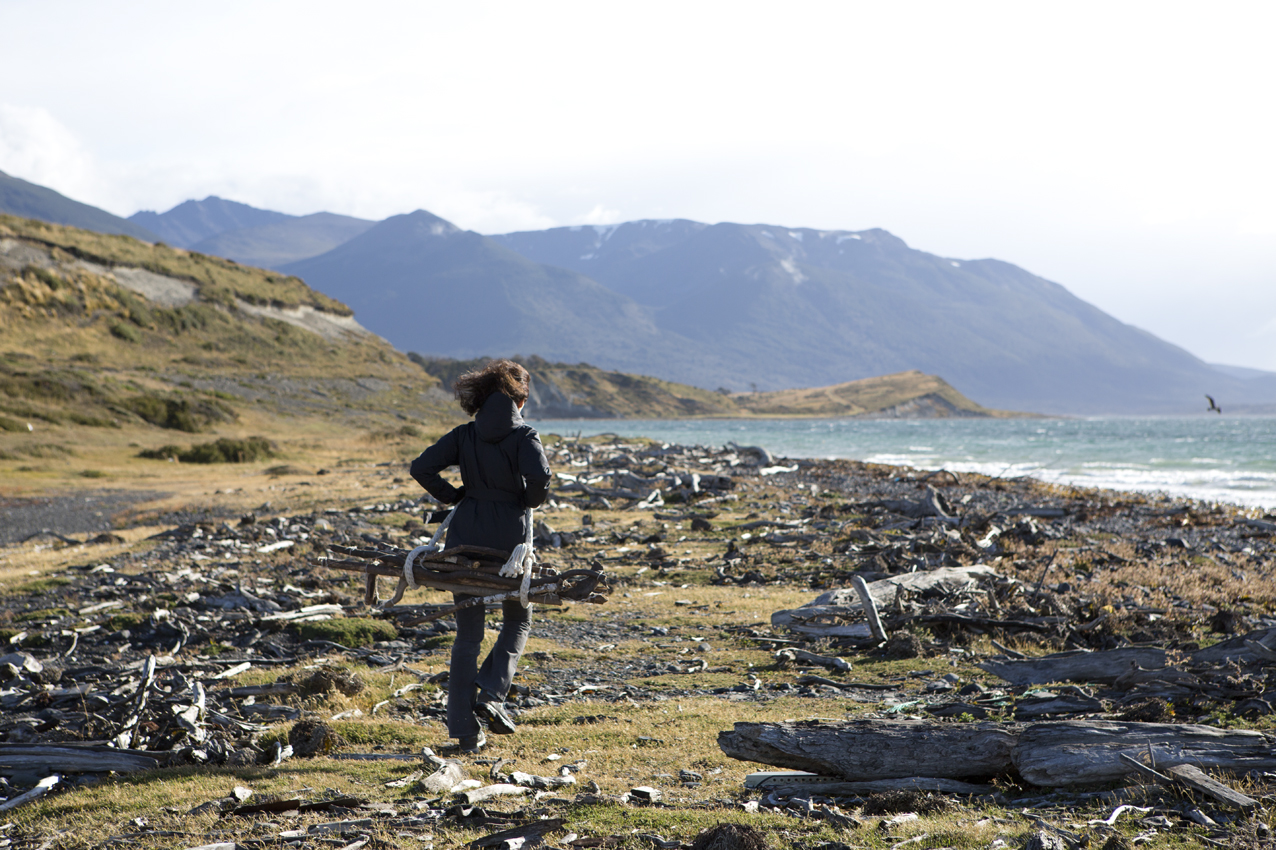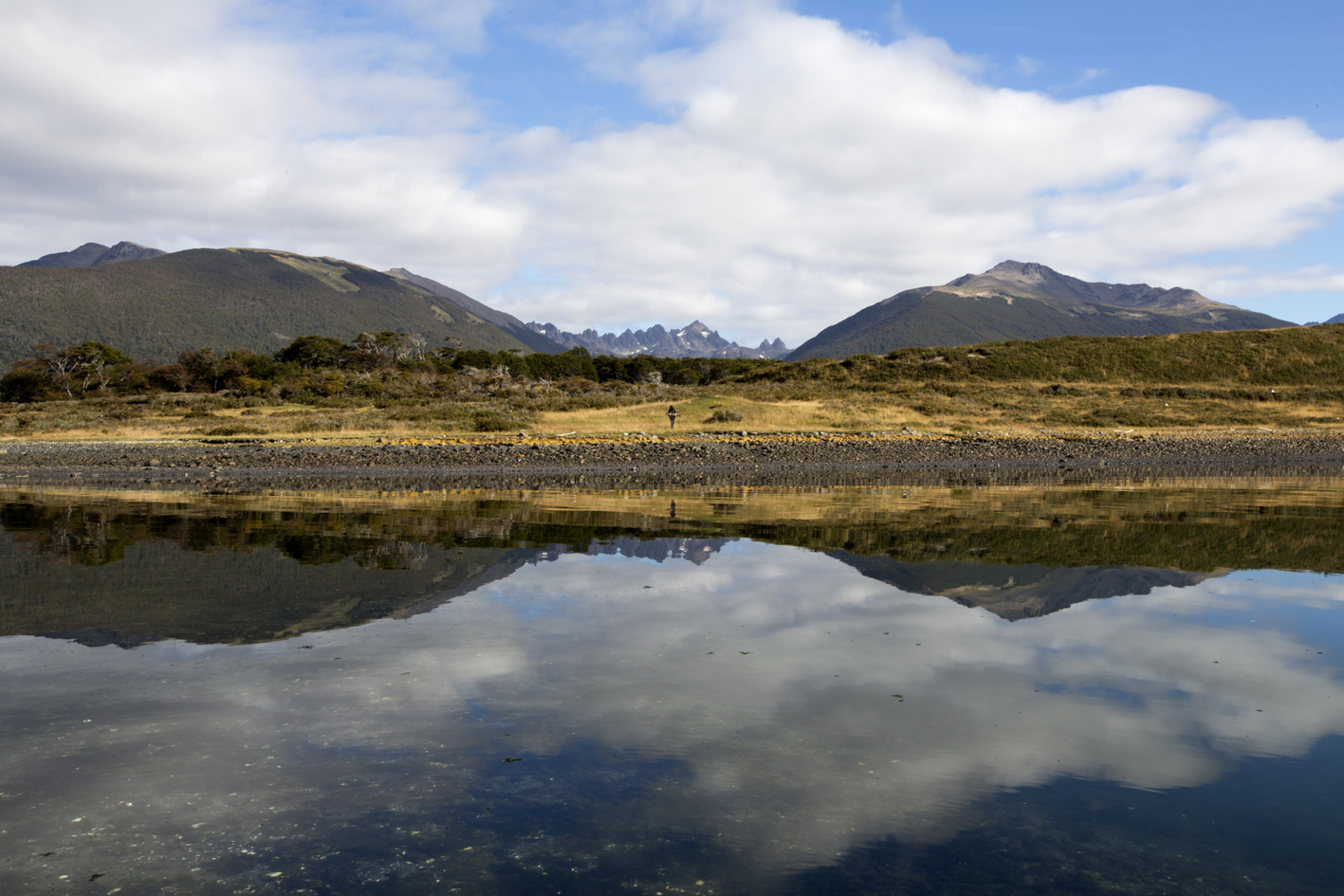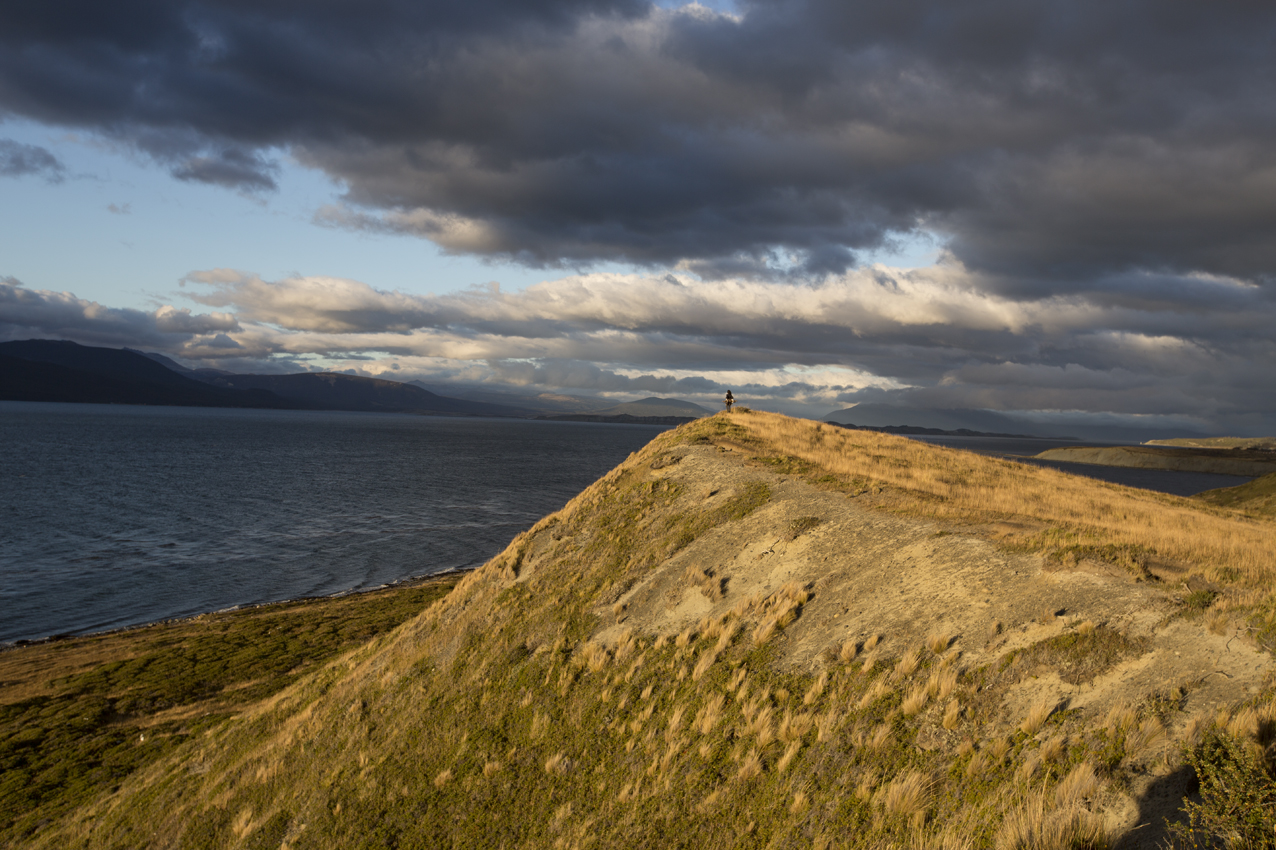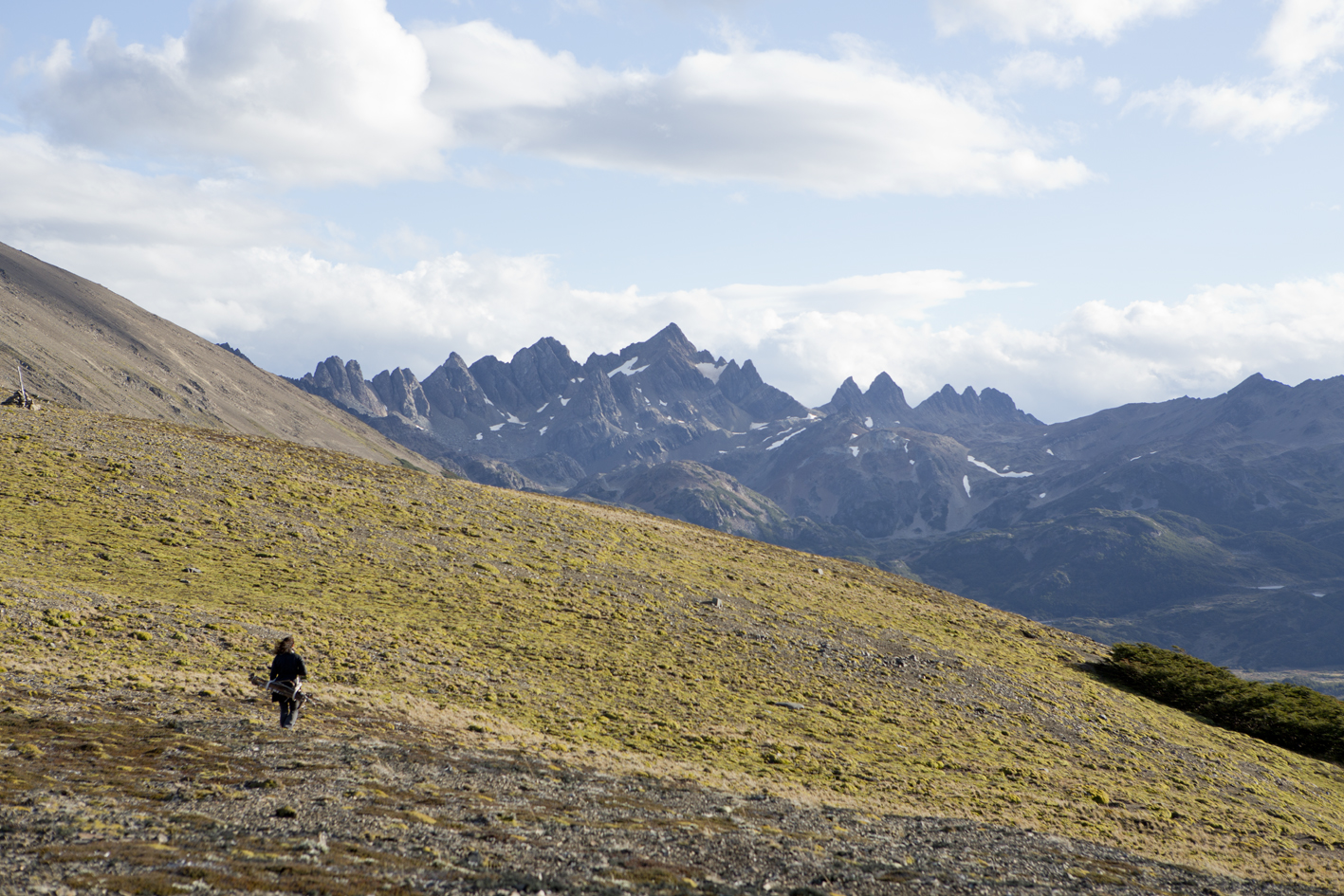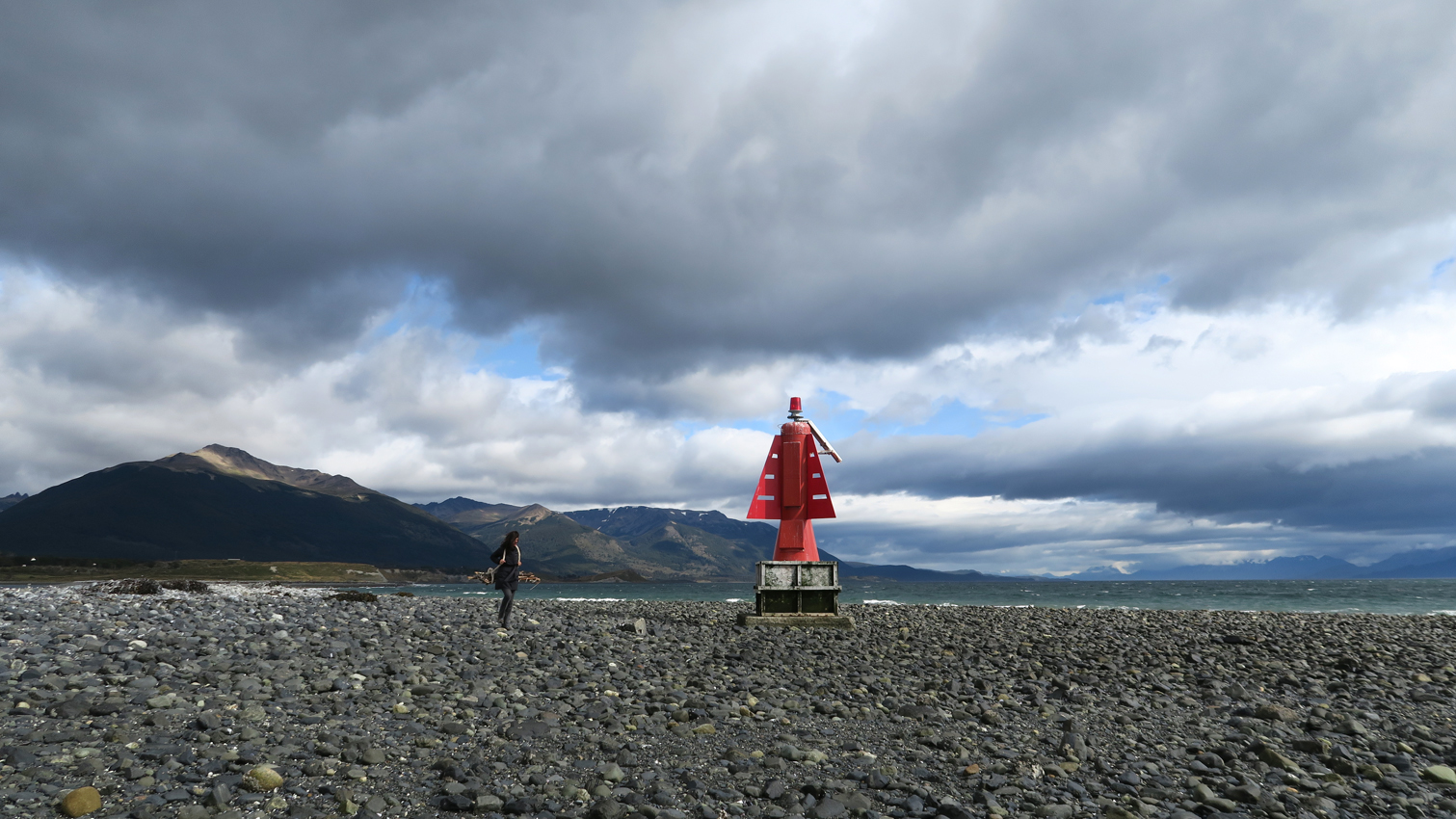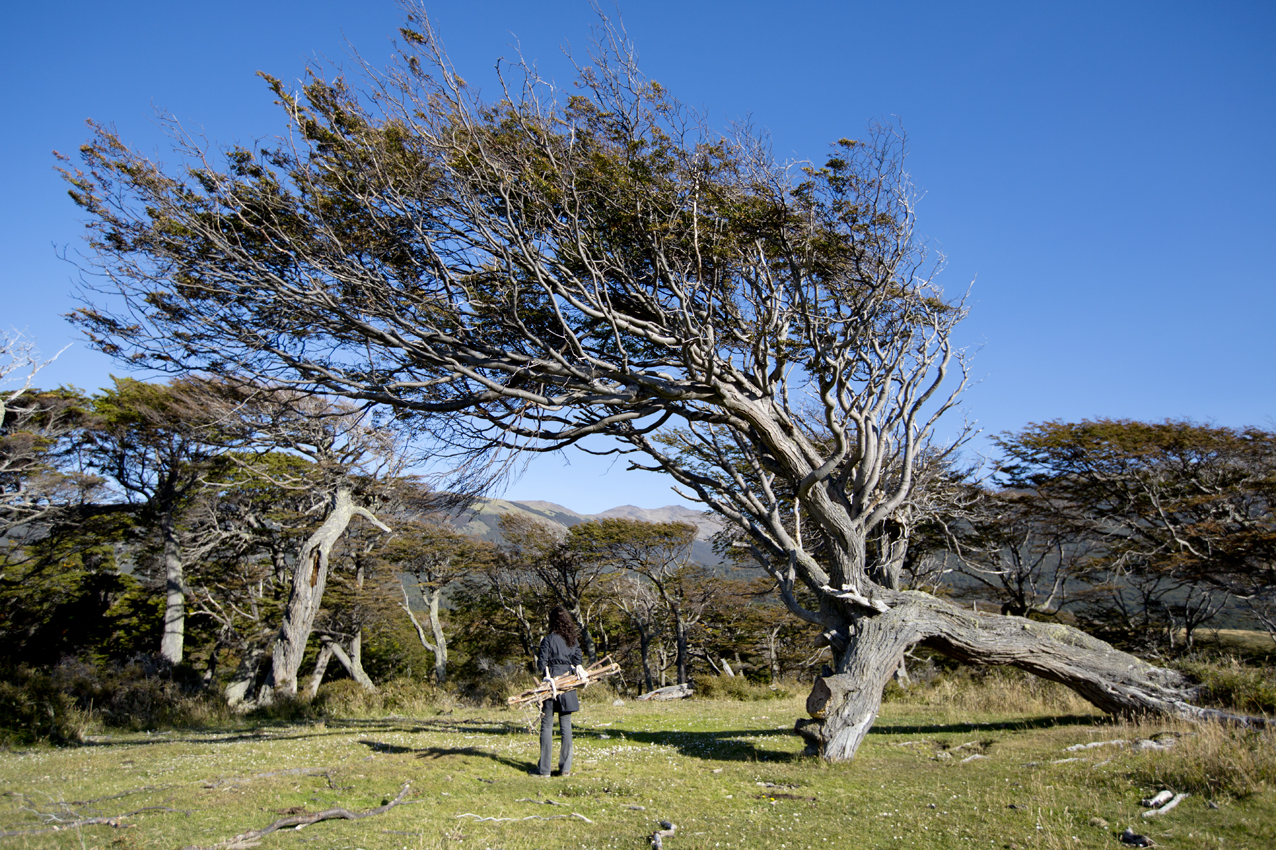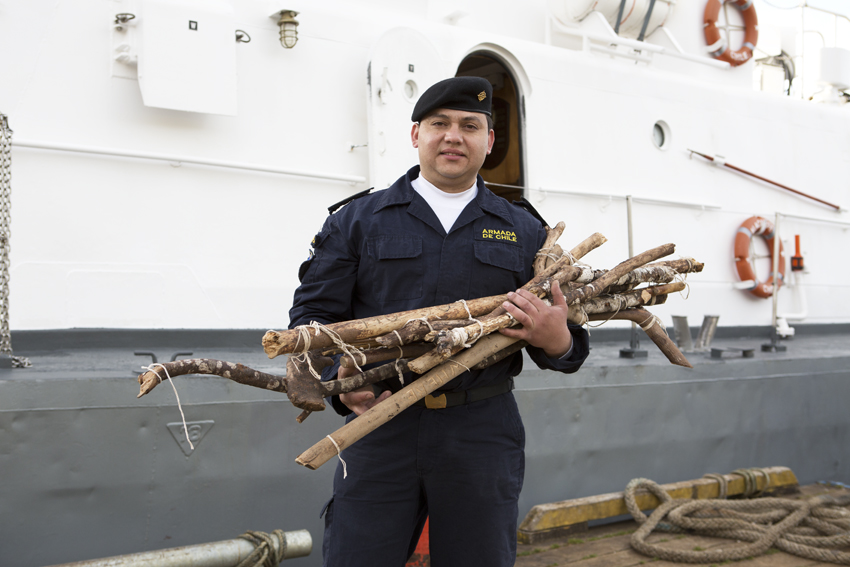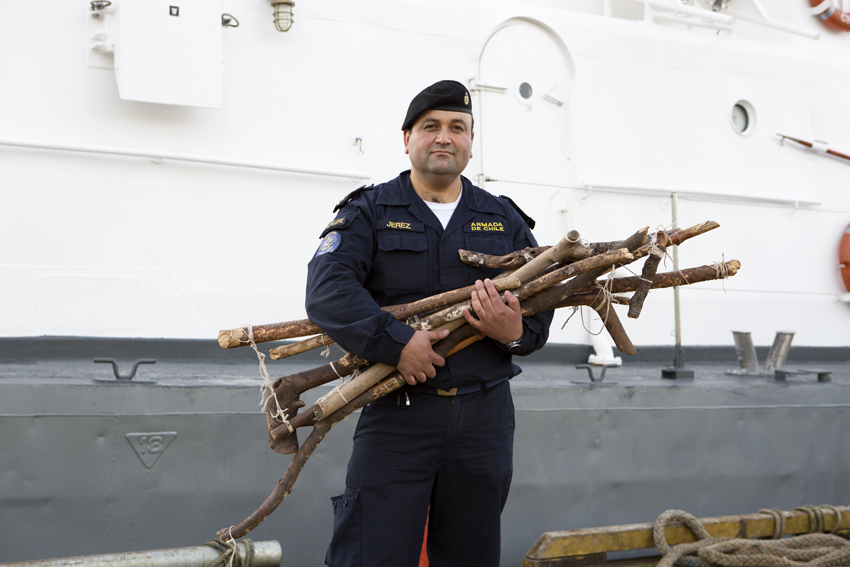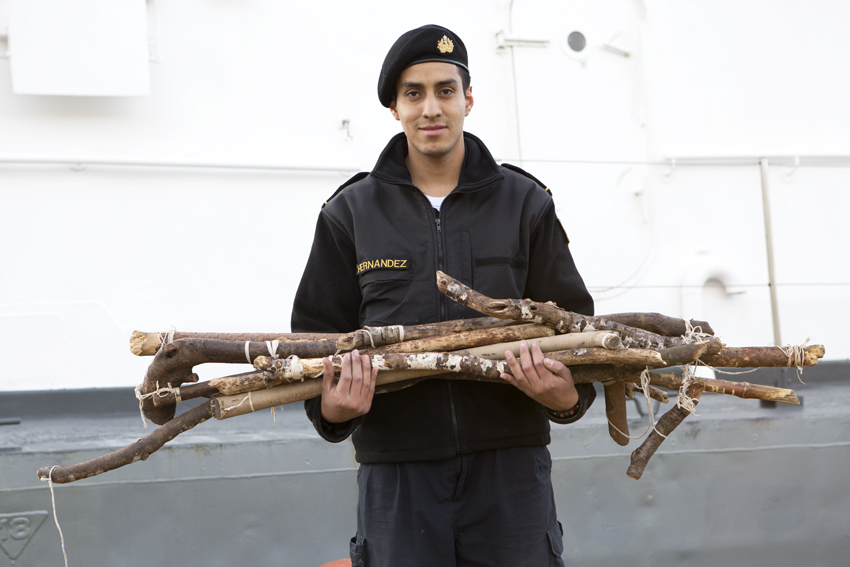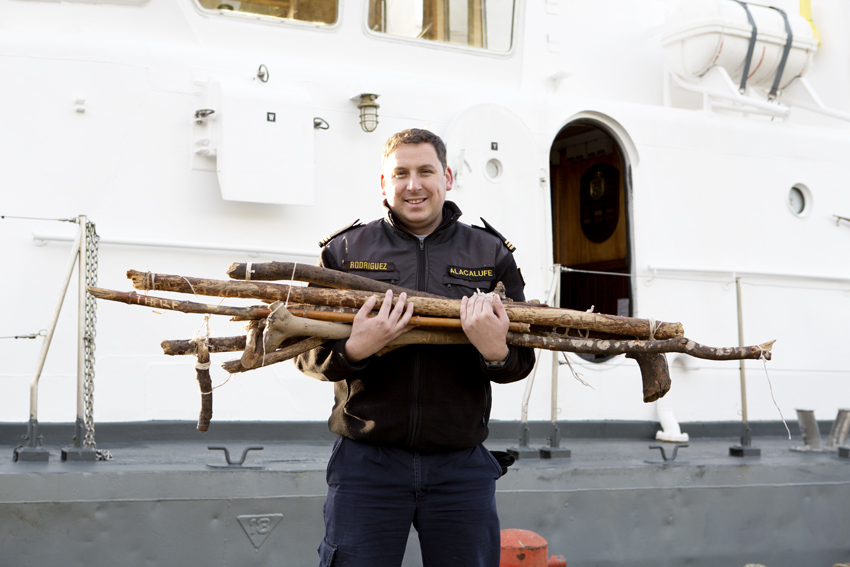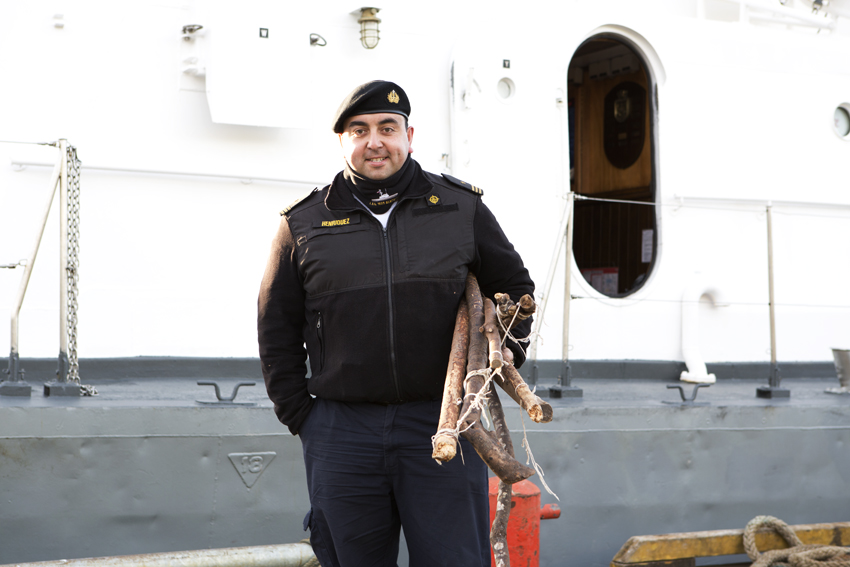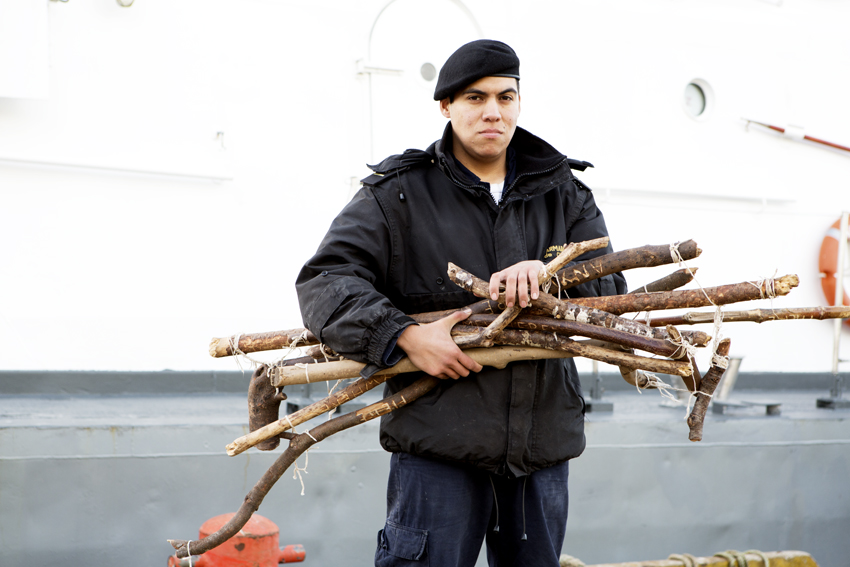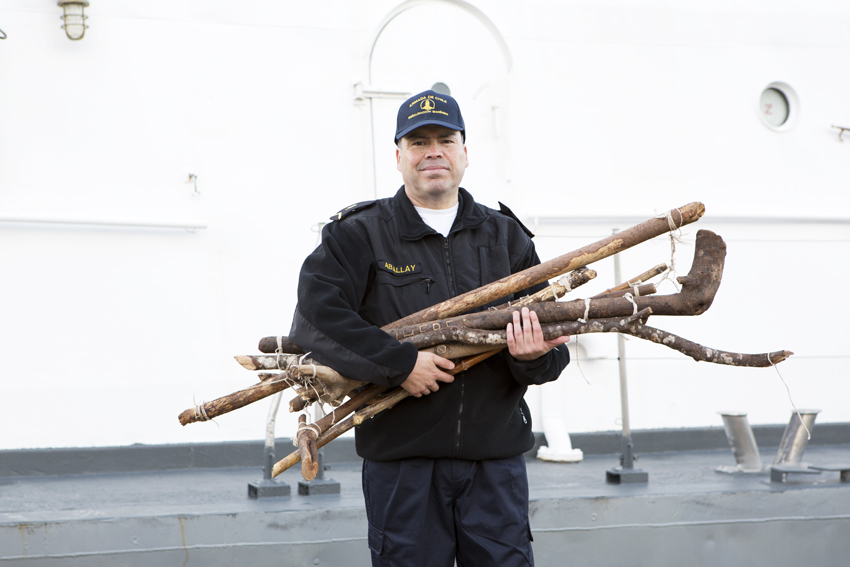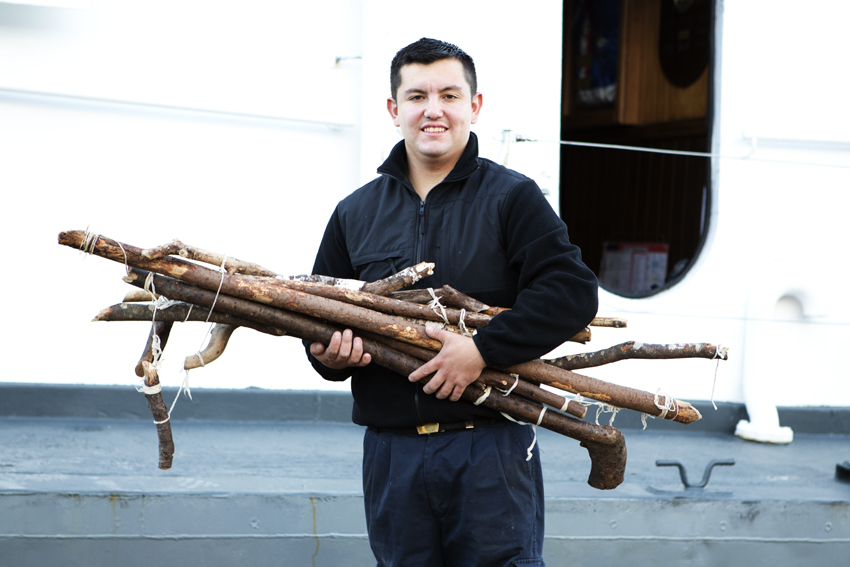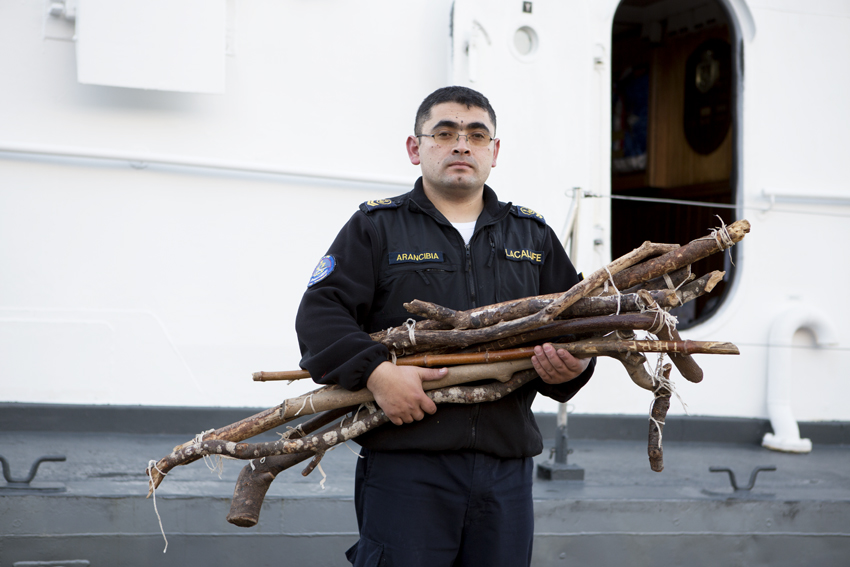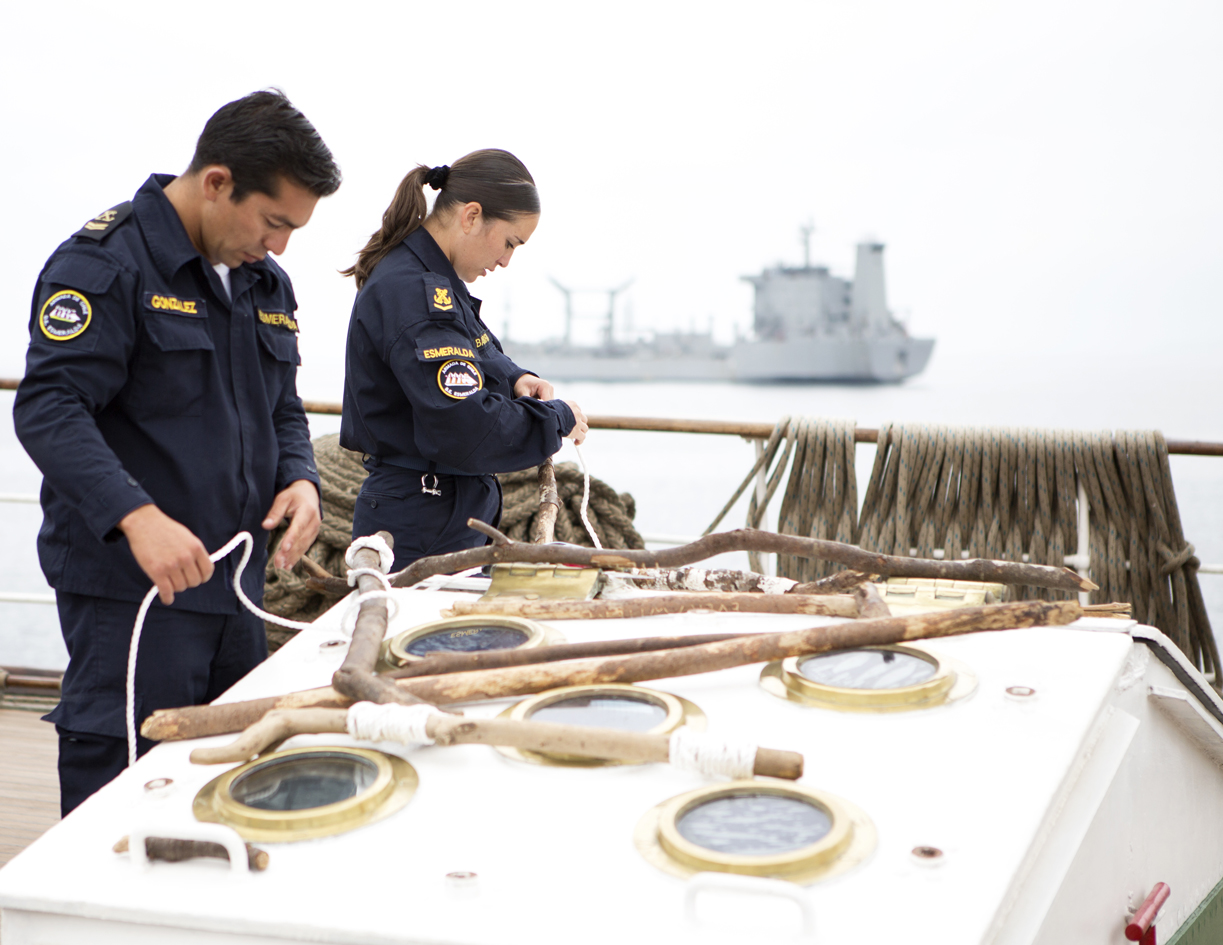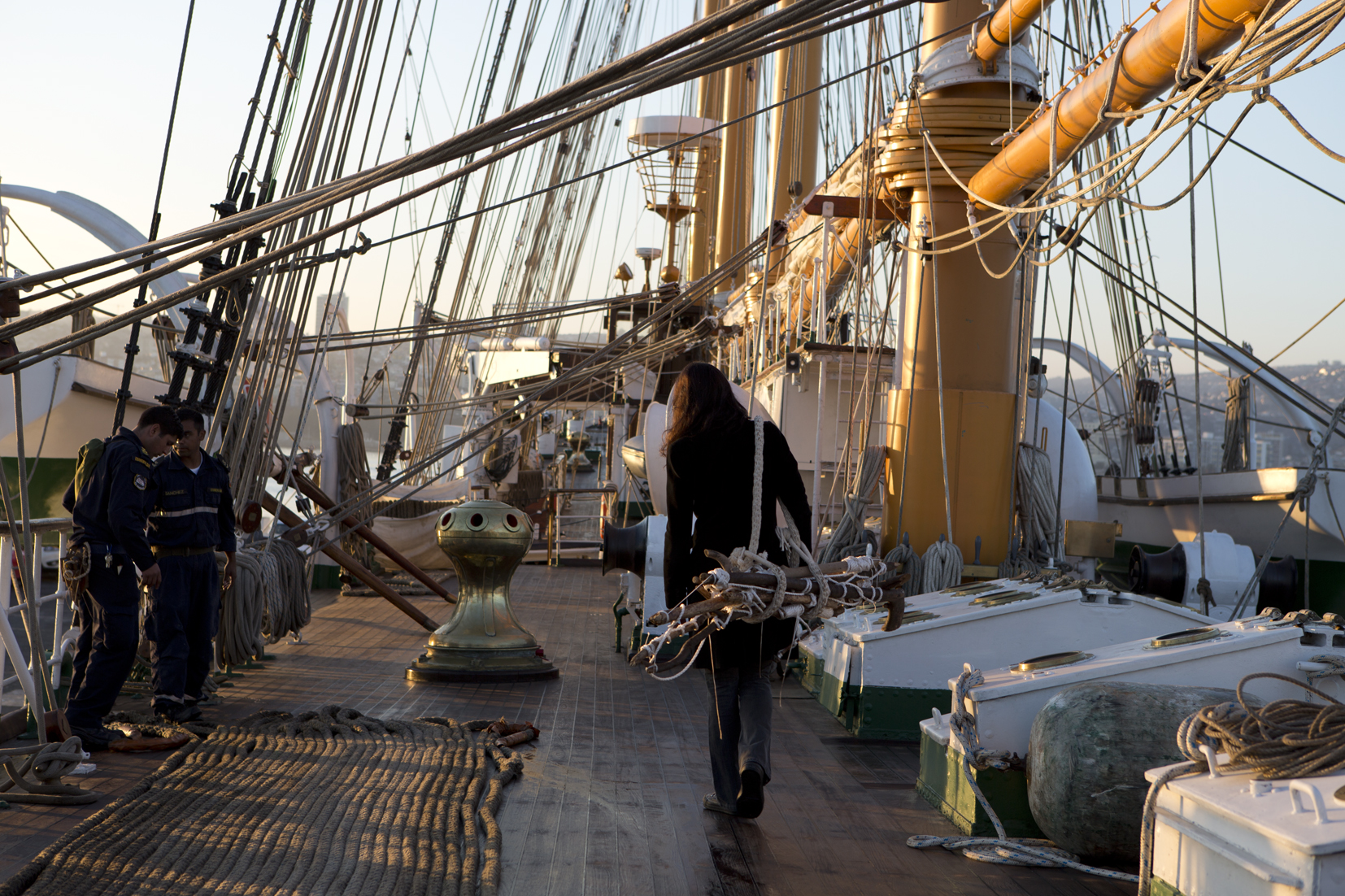Transcripción de un nota de voz de veintidos minutos y 7 segundos realizada el día 25 de octubre del año 2015.
LA ESPERANZA
En noviembre del año 2014 visité la exposición Otros Viajes que había montado en Correos de Chile acompañada de Oswaldo, un fotógrafo mexicano, quien mencionó, al pasar, la palabra esperanza. Esa palabra, la esperanza, me produjo una gran inquietud y pronto recordé que en el sur de Chile existía un lugar llamado el Seno de la Última Esperanza. Mi preocupación en ese tiempo era qué hacer con los palos, después de todo habían acompañado mis viajes por Chile durante tres años. Ese territorio podía ser finalmente el lugar para dejar los palos. Desafortunadamente, era muy basto.
In November 2014, I visited my exhibition “Other Journeys” at the Correos de Chile (Chilean Postal Service). I was accompanied by Mexican photographer Oswaldo, who at one time mentioned the word esperanza (hope). That word, hope, provoked a great disquiet in me and I remembered that there was a place in southern Chile called Seno de la Última Esperanza (The Bosom of the Last Hope). This disquiet related to the sticks and what to do with them, my companions for more than three years on long journeys throughout Chile. Seno de la Última Esperanza could be their final destination. However, it was a vast place. Something was missing.
EL MAR
Miraba el mapa de Chile y su extenso mar buscando un lugar y pronto me percaté de la existencia de los faros. El faro del Cabo de Hornos, el más austral del mundo emplazado en una isla apartada, podía ser el lugar para dejar los palos. Presenté un proyecto a la Armada de Chile, en una sala de reuniones amplia con uniformados amables que escuchaban atentos las historias de los palos y los viajes. Los marinos apoyaron entusiastas mi solicitud: intervenir los palos con los nudos marineros e ir a dejarlos navegando bajo el alero de la Armada de Chile hacia el faro más austral del mundo.
Me repetía a mi misma, voy a ir con los palos y sé que algo sucederá.
I studied the map of Chile and its vast sea in search of a place. I quickly happened upon the existence of lighthouses and especially the Faro de Cabo de Hornos (The Lighthouse of the Cape of Horns). This could be a place to leave the sticks. I decided to present a project to La Armada de Chile (Chilean Naval Force). This was done in a large meeting room of amiable uniformed officials listening attentively to the stories of the sticks and the journeys. They enthusiastically supported my proposal: to tie the sticks with sailors’ knots and sail under their wing, to leave them at the world’s southernmost lighthouse.
Isla Hornos. (Horn Island).
Ruta de navegación, Isla Navarino a Hornos. (Map, Navegation Track).
Carta de apoyo de la Armada de Chile. (Support letter, Chilean Navy).
EL VUELO
En marzo del año 2015, viajé junto al fotógrafo y los palos hasta Punta Arenas desde donde sobrevolaríamos, con la dotación aeronaval de la Armada de Chile, el Estrecho de Magallanes, el faro Evangelistas, Cabo de Hornos para luego aterrizar en Puerto Williams ubicado en la Isla Navarino. Antes de partir el vuelo, en la sala de reuniones, nos informaron sobre las normas de seguridad y nos vistieron con los equipos correspondientes para llevar a cabo la "Comisión Más Afuera".
In March, 2015, I traveled with my photographer and the sticks to Punta Arenas where we flew, with the naval crew of the Chilean Navy, over the Strait of Magellan, the Evangelists Lighthouse, Cape Horn before landing in Puerto Williams located on Navarino Island. Before departing flight, in the meeting room, they informed us about the safety and dressed us with appropriate equipment to carry out the "Commission Further Out".
LA ISLA
En isla Navarino permanecimos unos días en los cuales recorrimos distintos lugares con los palos, para esto fabriqué con cuerdas trenzadas un tejido para cargarlos a mis espaldas el cual me permitía soportar su peso. Ascendimos el cerro de la bandera llegando a divisar los Dientes de Navarino, recorrimos zonas militarizadas y paisajes extremos dando vueltas en círculos en espera de nuestra pronta navegación. Estas caminatas circulares se asemejaban a la forma de la misma isla y eran pequeños ejercicios en tierra firma que llamé Caminatas Circulares.
The journey to Cabo de Hornos would begin at the island of Navarino where we would stay for a few days. So that the sticks could accompany me on the journey to the island, I made a fabric out of twisted rope to carry them on my back supporting their weight. We climbed the cerro de la bandera (hill of the flag) to set sight on Dientes de Navarino (Teeth of Navarino), we visited military zones, and extreme landscapes going around in circles as we awaited sail. These circular walks resembled the shape of the island and were small exercises on dry land that I called Circular Walks.
LA NAVEGACIÓN
El 18 de marzo a las 2 am de una noche ventosa zarpamos en el lancha de servicios generales LSG Alacalufe de la Armada de Chile desde Puerto Williams hacia Cabo de Hornos, éramos 13 tripulantes y teníamos una serie de tareas por realizar dentro de nuestro camino o track o derrota.
On 18 March, at 2am on a windy night, we set sail in the boat LSG Alacalufe, of the Chilean Navy, from Puerto Williams to Cabo de Hornos. We were a crew of 13 in total and had a number of tasks to perform on our travels.
EL FARO
Cuando llegamos a la isla Hornos, nos acercamos en un zodiac con mucha lluvia y condiciones inhóspitas, subimos una gran escala cargando los palos. Al divisar el faro y con un sol radiante pensé con satisfacción que había logrado llegar a mi destino. El farero nos comento que el día anterior había recibido muchas visitas, pensé que este no era el lugar para dejar los palos aislados y protegidos. Regresé al Alacalufe para seguir navegando junto a ellos recorriendo islas como Picton, Lenox , Nueva y el islote Snipe.
A los pocos días regresamos a la isla Navarino y partimos rumbo a Santiago.
When we arrived at the island of Horns, coming to shore in a zodiac with much rain and inhospitable conditions, we climbed a great distance carrying the sticks. As we set sight on the lighthouse in the beaming sunlight; I thought, with great satisfaction, that I had arrived at my destination. The lighthouse keeper commented that they had received many visitors the day before. I thought, then, that this was not the place to leave the sticks isolated and protected. I returned to the Alcalufe. Together, we set sail surveying islands such Picton, Lenox, Nueva and the little island of Snipe. After a few days, we returned from the island of Navarino and headed for Santiago.
los nudos
A fines de abril del año 2015 hice una seria de visitas al buque Escuela Esmeralda de la Armada de Chile para observar las maniobras y los nudos marineros sobre la cubierta de la embarcación. El 22 de abril, en el molo de abrigo de Valparaíso, con el buque anclado, entregué los palos al Cabo Barra y Cabo Gonzalez para que los interviniesen con nudos marineros.
In late April of 2015, I made a series of visits to the ship Esmeralda, of the Chilean Navy, to study the manoeuvres and see the tying of sailors’ knots on the deck of the boat. In the breakwaters of Valparaíso, with the ship anchored, I handed the sticks to the sailors to tie them together with sailors’ knots.
EL BUQUE
Una de las navegaciones más significativas en la Esmeralda fue zarpando desde el puerto de Coquimbo recalando en Valparaíso. En este track los marinos izaron las grandes velas del buque bajo los toques de pito marinero. Los toques, las llamados por parlantes, los crujidos, el sonido del viento en las velas fueron parte importante de mi experiencia de navegación. Empecé a interesarme en el recurso sonoro como un nuevo medio de producción artística, dando paso a mi nuevo trabajo, Pasión Austral.
One of the most significant voyages of the Esmeralda was sailing from the port of Coquimbo and arriving in Valparaíso. On this trip the crew hoisted the ship’s largest sails to the sound of the sailors whistling, the calls of various speakers and the crackles and the sound of the wind in the sails; all these were part of my sailing experience. I became interested in sound as a new medium for artistic production.











